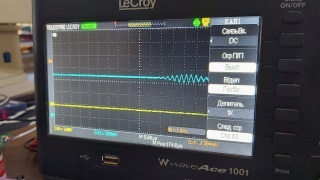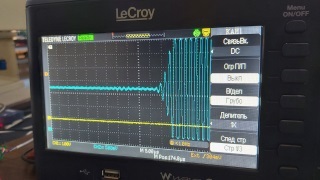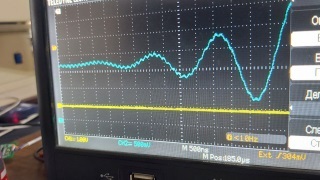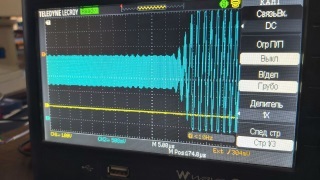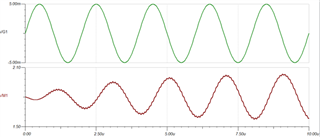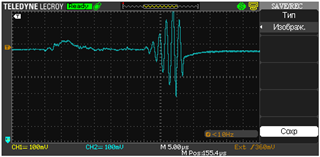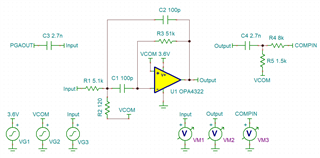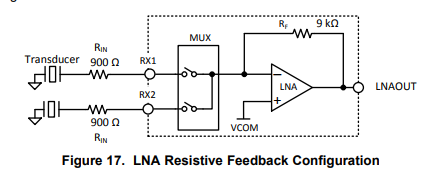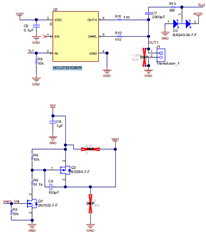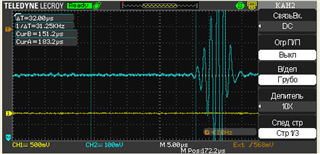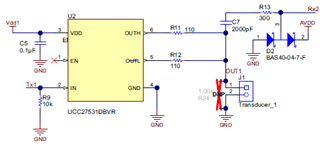Other Parts Discussed in Thread: LMV881, OPA353, OPA357, , OPA322, OPA4322, REF2912
Hello. I am testing the Ackerberg-Mossberg bandpass filter and have questions. The filter enters the generation mode and it worries me a lot. Generation appears both on the PCB and in the TINA simulation. Please tell me what I'm doing wrong?
The filter frequency is 500 kHz, the generation appears at the U2 stage.

Here is the oscillogram when starting the simulation, at first glance everything is fine
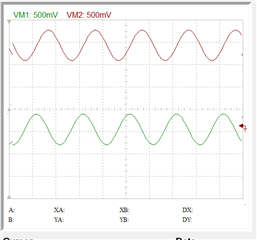
but as soon as I change the frequency, generation appears
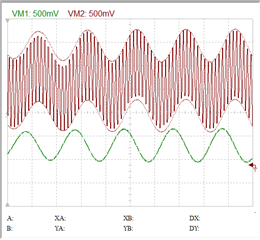
There is also generation on the assembled printed circuit board, but there it is from the very beginning, and does not depend on the frequency change.
I am using LMV881 operational amplifiers


